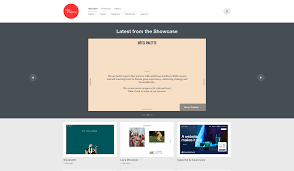
Web design websites are becoming increasingly popular as businesses and individuals look to create their own online presence. With the rise of the digital age, web design websites have become an essential tool for creating a professional and attractive website that stands out from the competition.
Web design websites offer a wide range of features, including templates, drag-and-drop editors, and custom coding options. Templates allow users to quickly create a website with minimal effort. Drag-and-drop editors provide users with an easy way to customize their website’s look and feel without having to learn HTML or CSS coding. Custom coding options are available for more advanced users who want to create a more unique website experience.
Web design websites also provide tools for optimizing user experience. These tools include search engine optimization (SEO) tools that help improve website visibility in search engines, as well as analytics tools that allow users to track visitor behavior on their site. This data can be used to improve customer service and increase conversion rates.
Finally, web design websites often come with hosting services, which allow users to host their websites on the web without having to purchase separate hosting services from a third party provider. Hosting services typically include features such as unlimited storage space, unlimited bandwidth, and email accounts.
Overall, web design websites provide businesses and individuals with an easy way to create their own online presence without having to invest in expensive software or hire a web developer. With the right tools and resources at your disposal, you can quickly create a professional looking website that stands out from the competition.
What are the 5 most commonly asked questions about web design websites?
- What is the best platform for web design?
- How do I get started with web design?
- What are the key elements of a successful website design?
- What are the latest trends in web design?
- How much does it cost to create a website?
What is the best platform for web design?
The best platform for web design depends on the type of project you are working on. Some popular platforms for web design include Adobe Dreamweaver, WordPress, Squarespace, Wix, and Weebly. Each platform offers different features and capabilities, so it is important to research which one would be best for your specific project.
How do I get started with web design?
- Learn the basics of HTML and CSS: HTML and CSS are the foundation of web design. You should learn the basics of both HTML and CSS before diving into more advanced web design.
- Get familiar with web design software: There are a variety of software programs available for web design, such as Adobe Dreamweaver, Microsoft Expression Web, and Macromedia Fireworks. Learning how to use these programs will help you create more complex websites.
- Understand responsive design: Responsive design is a technique used to make websites look good on all devices, no matter what size screen they are viewed on. Understanding how to use responsive design techniques will help you create better looking websites.
- Practice building websites: The best way to learn web design is to practice building websites. You can start by creating simple pages with HTML and CSS, then gradually move on to more complex designs as you become more comfortable with the language and tools available to you.
- Explore other web technologies: While HTML and CSS are the foundation of web design, there are other technologies that can be used to create more dynamic websites, such as JavaScript, AJAX, and Flash. Learning how to use these technologies can help you create even more impressive designs for your projects.
What are the key elements of a successful website design?
- User-Friendly Navigation: A website should be easy to navigate and have a logical structure that allows users to find what they are looking for quickly and easily.
- Responsive Design: Websites should be designed to look great on any device, from desktop computers to mobile phones.
- Quality Content: Quality content is essential for any website, as it will help attract visitors and keep them engaged with the website.
- Clear Call-to-Action: Every page of a website should have a clear call-to-action that encourages visitors to take some kind of action, such as signing up for an email list or making a purchase.
- Good Performance: Websites should load quickly and run smoothly so that visitors don’t get frustrated while browsing the site.
What are the latest trends in web design?
The latest trends in web design include:
1. Minimalism – Simple, uncluttered designs that focus on the user experience and emphasize usability.
2. Responsive Design – Websites that can adapt to any device or screen size.
3. Flat Design – A style of interface design emphasizing minimal use of stylistic elements and flat colors, with minimal gradients or textures.
4. Video Backgrounds – Using video as a background instead of a static image to create a more immersive experience for users.
5. Single Page Websites – A website that consists of just one page, often with scrolling navigation and multiple sections for different content.
6. Animations & Interactions – Animations and interactive elements are used to create an engaging user experience and keep users interested in exploring the website further.
7. Mobile-First Design – Designing websites with mobile devices in mind first, ensuring they are optimized for smaller screens before larger ones.
How much does it cost to create a website?
The cost of creating a website depends on a variety of factors, including the type of website you are creating, the amount of content you need to include, and the complexity of the design. Generally speaking, a basic website with a few pages and minimal features can cost anywhere from $500 to $5,000. More complex websites with custom features may cost anywhere from $10,000 to $50,000 or more.
